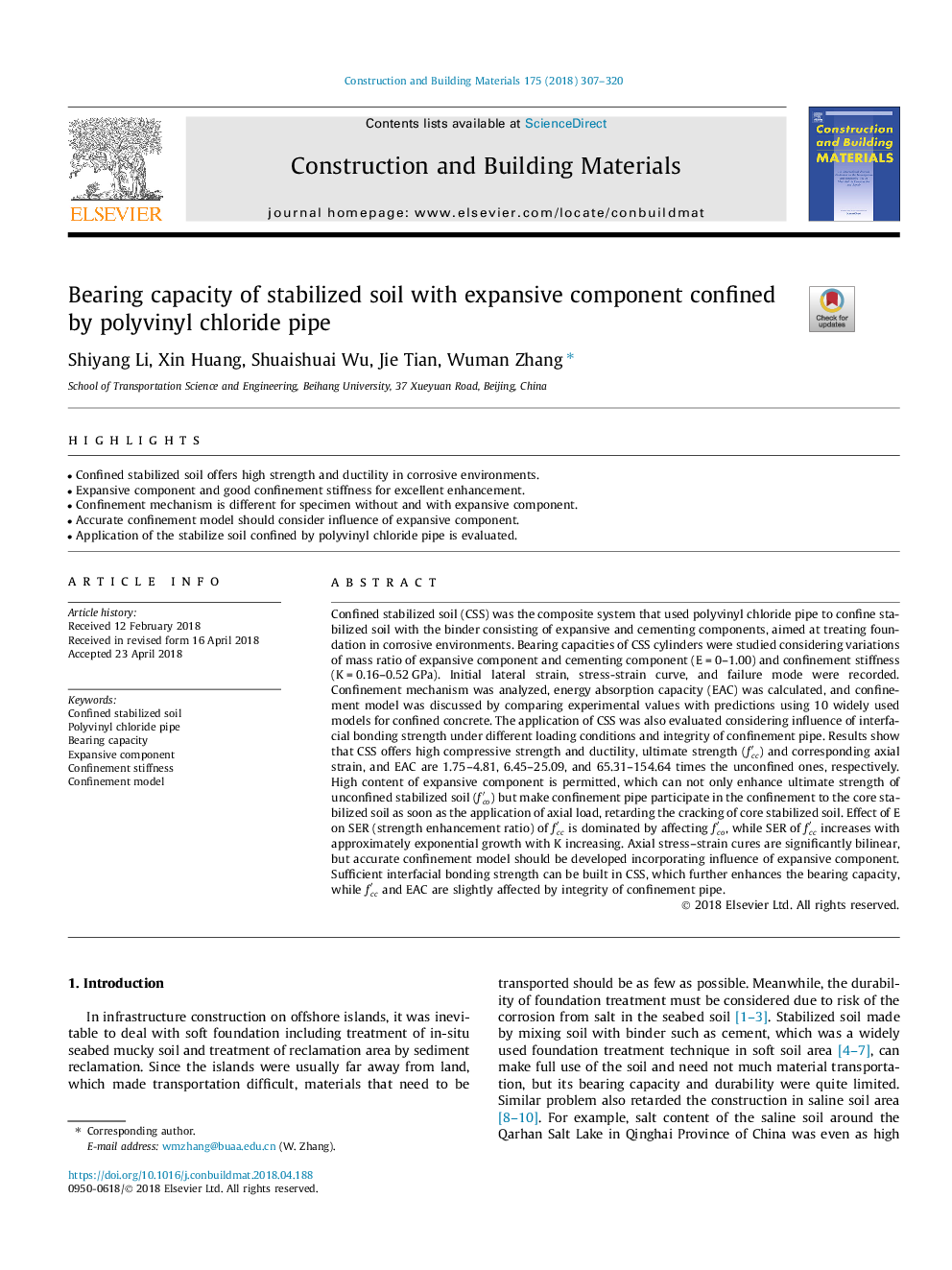| Article ID | Journal | Published Year | Pages | File Type |
|---|---|---|---|---|
| 6713420 | Construction and Building Materials | 2018 | 14 Pages |
Abstract
Confined stabilized soil (CSS) was the composite system that used polyvinyl chloride pipe to confine stabilized soil with the binder consisting of expansive and cementing components, aimed at treating foundation in corrosive environments. Bearing capacities of CSS cylinders were studied considering variations of mass ratio of expansive component and cementing component (Eâ¯=â¯0-1.00) and confinement stiffness (Kâ¯=â¯0.16-0.52â¯GPa). Initial lateral strain, stress-strain curve, and failure mode were recorded. Confinement mechanism was analyzed, energy absorption capacity (EAC) was calculated, and confinement model was discussed by comparing experimental values with predictions using 10 widely used models for confined concrete. The application of CSS was also evaluated considering influence of interfacial bonding strength under different loading conditions and integrity of confinement pipe. Results show that CSS offers high compressive strength and ductility, ultimate strength (fccâ²) and corresponding axial strain, and EAC are 1.75-4.81, 6.45-25.09, and 65.31-154.64 times the unconfined ones, respectively. High content of expansive component is permitted, which can not only enhance ultimate strength of unconfined stabilized soil (fcoâ²) but make confinement pipe participate in the confinement to the core stabilized soil as soon as the application of axial load, retarding the cracking of core stabilized soil. Effect of E on SER (strength enhancement ratio) of fccâ² is dominated by affecting fcoâ², while SER of fccâ² increases with approximately exponential growth with K increasing. Axial stress-strain cures are significantly bilinear, but accurate confinement model should be developed incorporating influence of expansive component. Sufficient interfacial bonding strength can be built in CSS, which further enhances the bearing capacity, while fccâ² and EAC are slightly affected by integrity of confinement pipe.
Keywords
Related Topics
Physical Sciences and Engineering
Engineering
Civil and Structural Engineering
Authors
Shiyang Li, Xin Huang, Shuaishuai Wu, Jie Tian, Wuman Zhang,
